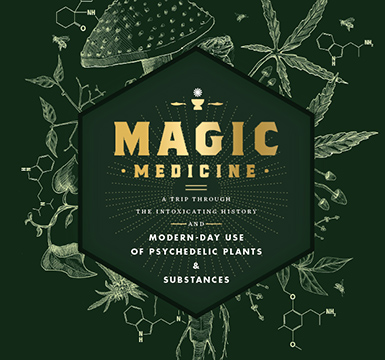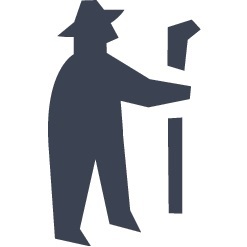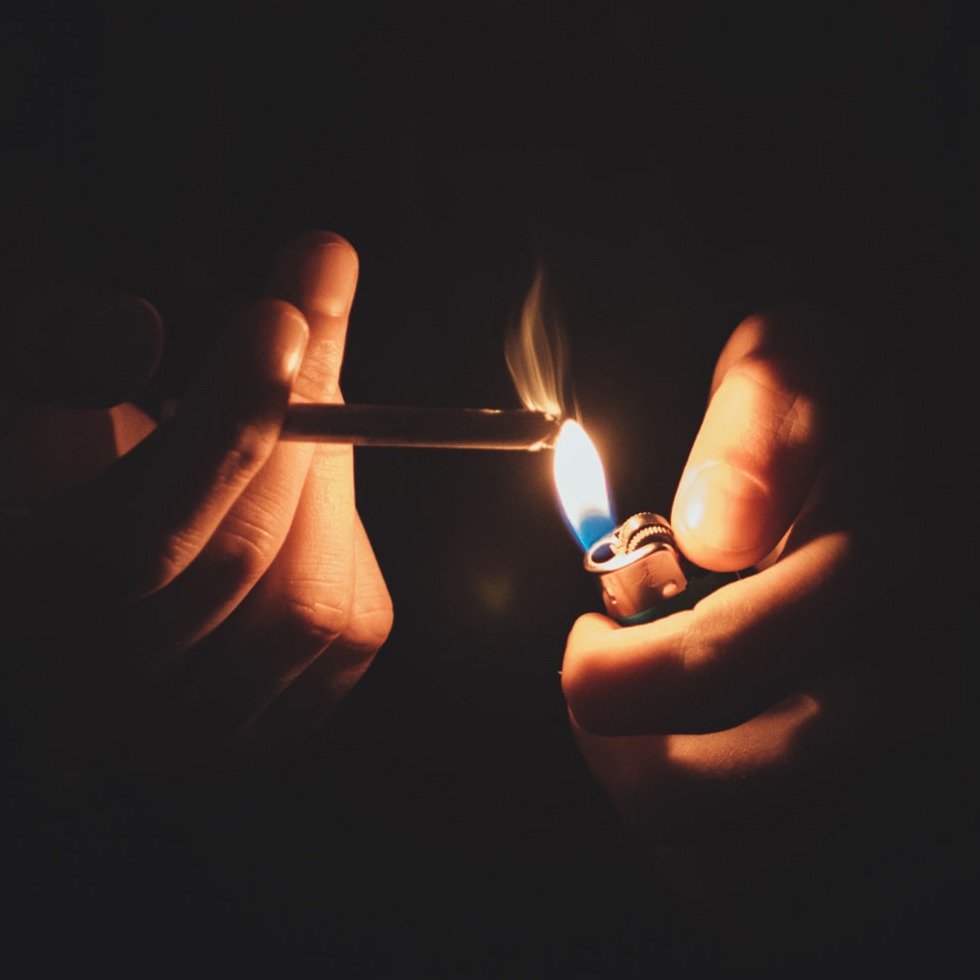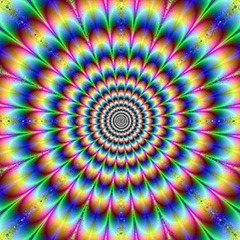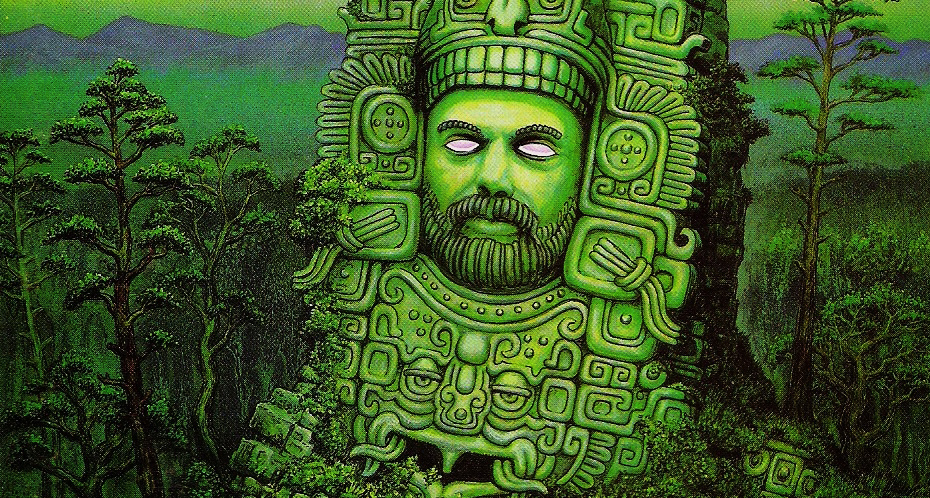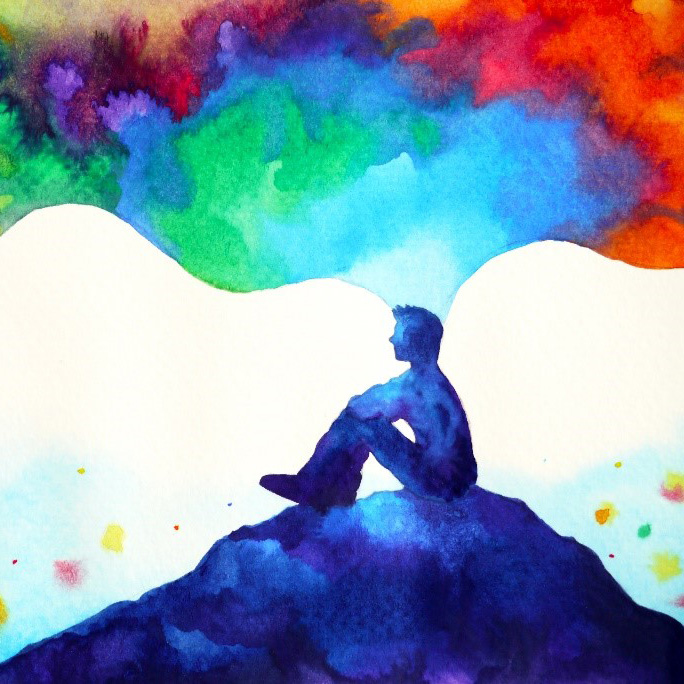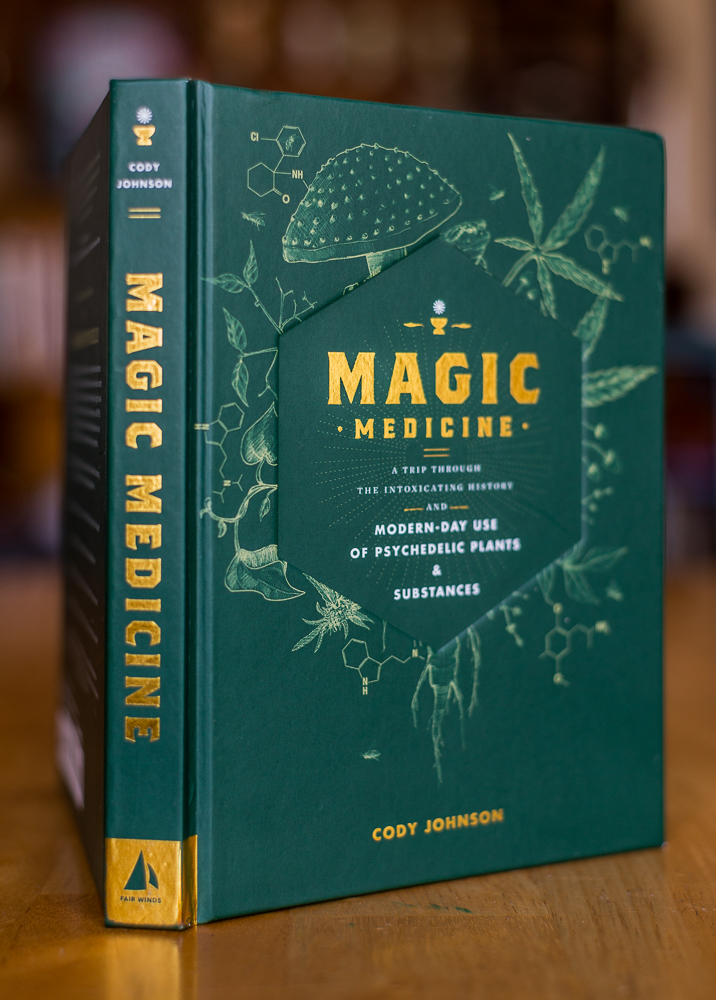Today’s guest post is by Mike Jay, the celebrated author of High Society, an illustrated global history of drugs, among other books. His essays have appeared in Aeon Magazine, The Wall Street Journal, and the London Review of Books, covering topics as diverse as drugs and creativity, flying potions, influencing machines, brainwashing, and opium pipes.
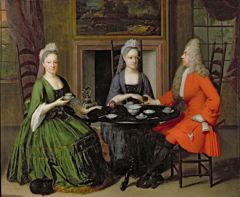 In February 1758 the 90-year-old Charles Lullin, a retired Swiss civil servant whose sight had been progressively failing since a cataract operation five years before, began to see considerably more than he had become accustomed to. For the next several months he was visited in his apartment by a silent procession of figures, invisible to everyone but him: young men in magnificent cloaks, perfectly coiffured ladies carrying boxes on their heads, girls dancing in silks and ribbons. These visions were recorded and published in 1760 by his grandson, the naturalist Charles Bonnet, after whom the syndrome of hallucinations in the elderly and partially sighted would much later be named.
In February 1758 the 90-year-old Charles Lullin, a retired Swiss civil servant whose sight had been progressively failing since a cataract operation five years before, began to see considerably more than he had become accustomed to. For the next several months he was visited in his apartment by a silent procession of figures, invisible to everyone but him: young men in magnificent cloaks, perfectly coiffured ladies carrying boxes on their heads, girls dancing in silks and ribbons. These visions were recorded and published in 1760 by his grandson, the naturalist Charles Bonnet, after whom the syndrome of hallucinations in the elderly and partially sighted would much later be named.
This celebrated case is one of the founding studies in the science of hallucinations, and frames the subject in distinctive ways. Most significantly, it has no link with mental illness: Lullin’s eyesight may have dimmed but his cognitive faculties were perfectly sharp, and he had no difficulty recognising his hallucinations as unreal. His experience was clearly different in kind from those experienced in psychoses such as schizophrenia: rather, it highlights the remarkable range of organic conditions, from neurological disorders to drug effects, of ‘hallucinations in the sane’.
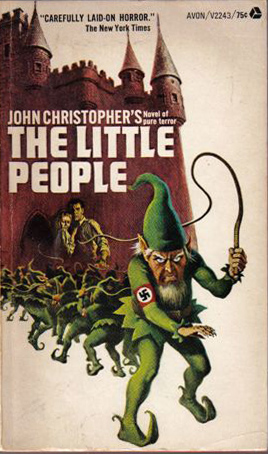 Much has been learned in the intervening century about the brain states and optical processes that lie behind such experiences, but the old question remains: what, if anything, do such hallucinations have to tell us? They cannot be dismissed as symptoms of insanity, and nor are they purely random sensory data: on the contrary, their content is curiously consistent. Miniature people, for example, are a common sight for those with Charles Bonnet syndrome: Oliver Sacks recalls a patient who was accompanied for a couple of weeks by ‘little people a few inches high, like elves or fairies, with little green caps, climbing up the sides of her wheelchair’ [1]. These little folk are also witnessed in many other circumstances: by sufferers from migraine, epilepsy or Parkinson’s disease, those on mind-altering drugs such as DMT (dimethyltryptamine) or magic mushrooms, or in withdrawal from alcohol or sedatives. These are wildly different causes, but the miniature people they generate are strikingly similar. They share many curious but consistent qualities: a tendency to appear in groups, for example, or arrayed in phalanxes (‘numerosity’), to wear headgear or exotic dress, and to go about their business autonomously, paying no attention to the subject’s attempts to interact with them. Who are these little people? Do they have a message for us? And if not, what is the meaning of their insistent qualities?
Much has been learned in the intervening century about the brain states and optical processes that lie behind such experiences, but the old question remains: what, if anything, do such hallucinations have to tell us? They cannot be dismissed as symptoms of insanity, and nor are they purely random sensory data: on the contrary, their content is curiously consistent. Miniature people, for example, are a common sight for those with Charles Bonnet syndrome: Oliver Sacks recalls a patient who was accompanied for a couple of weeks by ‘little people a few inches high, like elves or fairies, with little green caps, climbing up the sides of her wheelchair’ [1]. These little folk are also witnessed in many other circumstances: by sufferers from migraine, epilepsy or Parkinson’s disease, those on mind-altering drugs such as DMT (dimethyltryptamine) or magic mushrooms, or in withdrawal from alcohol or sedatives. These are wildly different causes, but the miniature people they generate are strikingly similar. They share many curious but consistent qualities: a tendency to appear in groups, for example, or arrayed in phalanxes (‘numerosity’), to wear headgear or exotic dress, and to go about their business autonomously, paying no attention to the subject’s attempts to interact with them. Who are these little people? Do they have a message for us? And if not, what is the meaning of their insistent qualities?
From the perspective of the neurosciences, such hallucinatory stereotypes are privileged, if cryptic, glimpses into the deep structure of the brain: the fact that they can be generated by so many unrelated conditions suggests hardwired perceptual structures that reliably manufacture them. But they also have a cultural life – and, for quintessentially private mental events, a remarkably well-defined social history. They are assigned distinct meanings in different cultures: in many, their familiar appearance is taken as evidence not of their neurological basis but of their independent existence in a transpersonal or spirit world. The phenomenon appears to be consistent through history – the oldest example typically cited in the literature is the ‘little strangers’ who appeared to St Macarius the Elder in his desert solitude around 350 CE – but susceptible to varied cultural interpretations: in Ireland such figures might be described as leprechauns, in Norway as trolls and so on. Do these archetypes draw on a private but universal mental landscape? If so, we might square the circle of nature and culture with the suggestion that they have a basis in neurology but their interpretation shifts with the times: the fairies of old now manifesting more commonly as aliens.
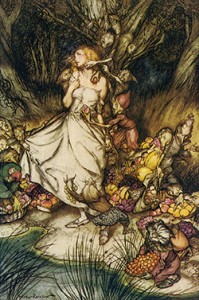 In western cultures these folkloric entities have been elaborated into cultural and literary forms, and indeed have been adopted as clinical labels. One of the many terms for seeing miniature people is ‘Lilliput sight’, another is ‘Alice in Wonderland syndrome’; naturally it has been suggested that Jonathan Swift may have experienced it during his demented final years, while Charles Dodgson may have based Alice’s distortions of scale on an account of mushroom-eating Siberian shamans in Mordecai Cooke’s drug compendium, Seven Sisters of Sleep (1860). Their classic manifestations in our culture, from traditional tales of fairy rings and hollow hills through to literary renderings such as Christina Rosetti’s Goblin Market, include the message that they are alluring but also mischievous and deceitful: those to whom they appear must beware of tricks, and of being lured into magical scenes that dissolve into cruel traps. Does this consensus mean that these entities – djinn, sprites, elves – really exist, or in some way inhabit the borders of our collective consciousness? Or does it warn that the attempt to extract meaning or profit from such encounters is a fool’s quest?
In western cultures these folkloric entities have been elaborated into cultural and literary forms, and indeed have been adopted as clinical labels. One of the many terms for seeing miniature people is ‘Lilliput sight’, another is ‘Alice in Wonderland syndrome’; naturally it has been suggested that Jonathan Swift may have experienced it during his demented final years, while Charles Dodgson may have based Alice’s distortions of scale on an account of mushroom-eating Siberian shamans in Mordecai Cooke’s drug compendium, Seven Sisters of Sleep (1860). Their classic manifestations in our culture, from traditional tales of fairy rings and hollow hills through to literary renderings such as Christina Rosetti’s Goblin Market, include the message that they are alluring but also mischievous and deceitful: those to whom they appear must beware of tricks, and of being lured into magical scenes that dissolve into cruel traps. Does this consensus mean that these entities – djinn, sprites, elves – really exist, or in some way inhabit the borders of our collective consciousness? Or does it warn that the attempt to extract meaning or profit from such encounters is a fool’s quest?
![]()
If hallucinations are subject to cultural influence, the most significant of the modern era is probably the word itself. ‘Hallucination’ is a term of surprisingly recent coinage, adopted in 1817 by the French alienist Jean-Etienne Dominique Esquirol.
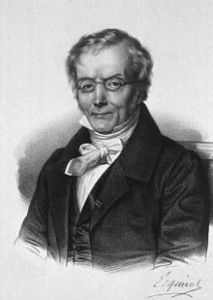 Esquirol’s stated goals were relatively modest. He wanted to create a single category for all sense disturbances: previous terms such as ‘vision’, ‘apparition’ or ‘spectral illusion’ were all weighted towards the visual, and he needed a term that applied equally to hearing voices or feeling the sensation of bugs under the skin. He also wanted to reflect what he conceived as a primary distinction between misperceptions, which he termed ‘illusions’, and perceptions constructed entirely by the mind. Interpreting a fleeting shadow as a person or hearing a voice in a babbling stream are illusions; but ‘if a man has the intimate conviction of actually perceiving a sensation for which there is no external object, he is in a hallucinatory state; he is a visionary’ (visionnaire)[2]. Hallucinations, like dreams, are independent of the senses: those who experience them might be said to be ‘dreaming while awake’.
Esquirol’s stated goals were relatively modest. He wanted to create a single category for all sense disturbances: previous terms such as ‘vision’, ‘apparition’ or ‘spectral illusion’ were all weighted towards the visual, and he needed a term that applied equally to hearing voices or feeling the sensation of bugs under the skin. He also wanted to reflect what he conceived as a primary distinction between misperceptions, which he termed ‘illusions’, and perceptions constructed entirely by the mind. Interpreting a fleeting shadow as a person or hearing a voice in a babbling stream are illusions; but ‘if a man has the intimate conviction of actually perceiving a sensation for which there is no external object, he is in a hallucinatory state; he is a visionary’ (visionnaire)[2]. Hallucinations, like dreams, are independent of the senses: those who experience them might be said to be ‘dreaming while awake’.
Esquirol’s description of the hallucinator as a ‘visionary’ sounds strange to modern ears precisely because his new label transformed its object so profoundly. Private sensory events (to adopt a neutral term, though one that fails to distinguish hallucinations from dreams) have been integrated into the public sphere throughout human history, and often as legitimate sources of information: oracles, messages from ancestors or the voice of God. The word that Esquirol repurposed, alucinari, had signified a wandering in mind, a soul adrift: Dante, most famously, used it to describe the effects of the siren song on Odysseus. But from the late 1830s, when ‘hallucination’ penetrated first clinical and then common language, it cast a medical shadow over the borderlands previously claimed by ‘soul’ and ‘spirit’. The ambiguities present in terms such as ‘visionary’ were overwritten with an implicit judgment that these were not messages from beyond the self but errors in mental functioning. As such they were by definition pathological, and increasingly viewed as symptoms of insanity.
Debates in mid-century French psychiatry reflected these assumptions. Were hallucinations a malfunction of the sense organs or, as Esquirol maintained, a ‘central’ phenomenon of the brain itself? Was it possible for them to co-exist with reason? Should all mystic states be regarded as hallucinations? Such questions were put to the test by Esquirol’s protégé Jacques-Joseph Moreau de Tours, who experimented with large doses of hashish in the company of a literary demi-monde that included Théophile Gautier, Gérard de Nerval and Charles Baudelaire. He concluded that, even at the mindbending peak of its effects, hashish produced only illusions based on sensory distortion rather than ‘true hallucinations’, manufactured by the mind from whole cloth. ‘A hallucination,’ he wrote in 1845, ‘is the most frequent symptom and the fundamental fact of delirium, mental illness and madness’[3]. The physician and theorist of dreams Alfred Maury assumed a direct equivalence between hallucinators and the insane: ‘for what are the latter, if not minds who believe in their hallucinations as if they were serious facts?’[4].
As visionary experience was drawn into the ambit of medicine, it became less visible in normal life. ‘Retrospective medicine’, a term coined in 1869 by the physician and positivist philosopher Emile Littré, set about diagnosing Moses, Socrates and Muhammad as epileptics, hysterics or paranoiacs. Anomalous private experiences, now that they carried the taint of insanity, were less commonly shared. For example, the mysterious phenomenon of pain from amputated limbs had been anecdotally familiar at least since it was described in Descartes’s Meditations; but before the American neurologist Silas Weir Mitchell could offer the first full account of ‘phantom limb syndrome’ in 1872, he had been obliged to spend many years delicately eliciting case histories from invalid soldiers who had kept their strange sensations to themselves for fear of being transferred to an asylum.
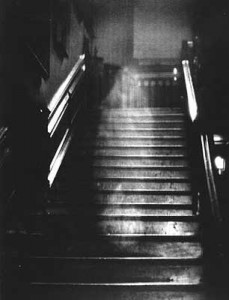 It was against this background that the Society of Psychical Research (SPR) in 1889 launched an ‘International Census of Waking Hallucinations in the Sane’. British doctors and philosophers had amassed many vivid reports of ‘apparitions’ and ‘spectral illusions’ in the early decades of the nineteenth century, and disputed whether they were ghosts, sensory errors or mental derangements; after mid-century, the term ‘hallucination’ had brought with it a markedly more clinical and admonitory tone. Henry Maudsley, in ‘Hallucinations of the Senses’ (1878), diagnosed Joan of Arc with religious mania, characterised such visionary episodes as ‘discordant notes in the grand harmony’ of human nature, and cautioned the reader to ‘guard against’ them by ‘prudent care of the body and wise culture of the mind’[5].
It was against this background that the Society of Psychical Research (SPR) in 1889 launched an ‘International Census of Waking Hallucinations in the Sane’. British doctors and philosophers had amassed many vivid reports of ‘apparitions’ and ‘spectral illusions’ in the early decades of the nineteenth century, and disputed whether they were ghosts, sensory errors or mental derangements; after mid-century, the term ‘hallucination’ had brought with it a markedly more clinical and admonitory tone. Henry Maudsley, in ‘Hallucinations of the Senses’ (1878), diagnosed Joan of Arc with religious mania, characterised such visionary episodes as ‘discordant notes in the grand harmony’ of human nature, and cautioned the reader to ‘guard against’ them by ‘prudent care of the body and wise culture of the mind’[5].
The president of the SPR was the Cambridge philosophy professor Henry Sidgwick, who set out the aims and results of the census in a series of public addresses that aimed to reclaim hallucinations for sanity, but struggled with the trap set by the word itself. He recognised that it implied at best ‘erroneous and illusory belief’, at worst something ‘entirely false and morbid’, but he could offer no viable alternative: partly on Esquirol’s grounds that he wished to include voice-hearing and invisible touches along with visions, but also because he was determined to avoid any term that might imply belief in the supernatural and thereby exclude sceptics from his sample. His final wording skirted the problem, inquiring whether the subject has ever had ‘a vivid impression of seeing or being touched by a living being or inanimate object, or of hearing a voice, which impression, so far as you could discover, was not due to an external physical cause’. ‘Hallucination’ was, however, included in the ‘Instructions to Collectors’ on the back of the form as ‘in many cases … the only proper term’[6].
The census was distributed through the SPR’s network of seven hundred members, and aimed for 35,000 respondents; in the end it managed 6481, with 727 positive replies to its question, suggesting that these ‘vivid impressions’ were familiar to around 11 per cent of the sane population. But what did they mean? Despite his care to alienate neither spiritualists nor materialists, Sidgwick was considerably closer to the former: his academic and public work sought to reconcile science, religion and ethics, and he argued that a moral order could only exist if some part of human personality survived bodily death. The census was part of a wide-ranging programme of research into telepathy and thought transference, and his overriding interest in the data is as suggestive evidence for the reality of these powers, as well as for life after death. The first case he quotes is that of ‘a figure in a brown dress with broad lace collar and golden hair’[7] seen by three persons on separate occasions; he is most excited by cases of ‘collective hallucination’, which are methodically parsed for logical explanation: coincidence, telepathy or supernatural agency?
Sidgwick decoupled hallucinations from pathology and insanity, but he still treated them as evidence of something else rather than as phenomena that might have meaning in their own right. This assumption was clearly shared by most of the census subjects: their ‘vivid impressions’ are almost all of people or obliquely human forms, typically departed relatives or mysterious figures in black, materialising and vanishing in the manner of the ghost stories of the time. If nothing else, the census reveals that the private world of hallucinations can be dated as easily as fashion or literature. Fascinating on many levels (as a precursor of Mass-Observation, or a spectral outline of the late Victorian psyche), the SPR’s initiative failed to generate a convincing panorama, or even a snapshot, of the reality that its members hoped to bring into the purview of science. Hallucinations might not be a sign of madness, but neither could they be shown to convey any clear message or evidence of a world beyond themselves.
![]()
During the twentieth century hallucinations were reclaimed by a medical science that (at least after Pierre Janet and Sigmund Freud’s work on hypnosis) was less interested in their content than in the biological mechanisms that underpinned them. Such mechanisms had long been inferred, and occasionally glimpsed. On a stroll through town one day in 1758, Charles Lullin had stopped to peer at a giant scaffold tower; when he returned home he found it sitting in miniature form in his living room. This prompted him to experiment with the blue square that often rippled across his vision: he found that if he saw it next to a fountain in the distance it appeared to be the size of a blanket, but as he focused on closer objects it shrank to the size of a handkerchief.
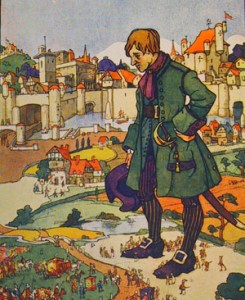 More recent studies have suggested that Lilliputian sight may be related to disturbance of the ‘size constancy’ function in the visual association cortex, which allows us to recognise automatically that an object is not actually shrinking as it recedes from view. Today’s leading researchers in the field are beginning to tease apart the different brain regions and neurochemical pathways involved and to associate particular visual forms with each. Dominic ffytche’s work, to take one example, also suggests that Charles Bonnet syndrome is itself a chimera: since its identification in 1936 it has blurred the boundaries between eye disease and senility, but now it seems to be splitting into two or more quite separate conditions[8]. And as these deep mechanisms are being exposed, such cracks are spreading: is ‘hallucination’ a meaningful category at all, or simply a ragbag of poorly understood symptoms with causes as disparate as macular degeneration, the prelude to an epileptic seizure, the effects of withdrawal from alcohol, or voices heard while drifting off to sleep?
More recent studies have suggested that Lilliputian sight may be related to disturbance of the ‘size constancy’ function in the visual association cortex, which allows us to recognise automatically that an object is not actually shrinking as it recedes from view. Today’s leading researchers in the field are beginning to tease apart the different brain regions and neurochemical pathways involved and to associate particular visual forms with each. Dominic ffytche’s work, to take one example, also suggests that Charles Bonnet syndrome is itself a chimera: since its identification in 1936 it has blurred the boundaries between eye disease and senility, but now it seems to be splitting into two or more quite separate conditions[8]. And as these deep mechanisms are being exposed, such cracks are spreading: is ‘hallucination’ a meaningful category at all, or simply a ragbag of poorly understood symptoms with causes as disparate as macular degeneration, the prelude to an epileptic seizure, the effects of withdrawal from alcohol, or voices heard while drifting off to sleep?
If the category is dissolving under scrutiny, the ideological power of the label remains nonetheless intact. The definition of ‘hallucination’ in the American Psychiatric Association’s Diagnostic and Statistical Manual of Mental Disorders (DSM-IV) is still Esquirol’s: ‘a sensory perception that has the compelling sense of reality of a true perception but that occurs without external stimulation of the relevant sensory organ’. It is impossible within this framework to investigate whether private perceptions might be objectively real, and the twentieth-century counterparts of the SPR operated at the margins of science. Prominent among them were drug experimenters such as the renegade neuroscientist John Lilly, who postulated an 11-level model of the mind to explain how his experiments with LSD in sensory deprivation tanks might have plugged him into a cosmic computer, and the psychedelic explorer Terence McKenna, whose DMT and mushroom revelations – described in his book True Hallucinations (1993) and elsewhere – were mediated by Lilliputian folk he described as ‘self-transforming machine elves’.
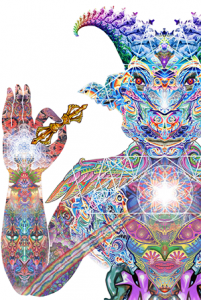 McKenna’s elves (or gnomes, as he sometimes called them) have become the paradigm for the little people encountered in drug-induced hallucinations, and the focus for debates about their ontological status and meaning. McKenna insisted they were ‘transhuman, hyperdimensional and extremely alien’, and that they had a vital message for humanity. As with the SPR, however, the content of the message was less memorable than the messengers. McKenna’s elves blew his mind while urgently instructing him to remain rational (‘Don’t give in to astonishment! Pay attention to what we’re doing!’)[9] but the most coherent revelation he was able to extract from them was that ‘some enormously reality-rearranging thing’[10] was due to take place around 21 December 2012.
McKenna’s elves (or gnomes, as he sometimes called them) have become the paradigm for the little people encountered in drug-induced hallucinations, and the focus for debates about their ontological status and meaning. McKenna insisted they were ‘transhuman, hyperdimensional and extremely alien’, and that they had a vital message for humanity. As with the SPR, however, the content of the message was less memorable than the messengers. McKenna’s elves blew his mind while urgently instructing him to remain rational (‘Don’t give in to astonishment! Pay attention to what we’re doing!’)[9] but the most coherent revelation he was able to extract from them was that ‘some enormously reality-rearranging thing’[10] was due to take place around 21 December 2012.
McKenna recognized that his elves partook of the little people’s trickster archetype, but he was less ready to acknowledge that such entities are also regularly generated by more mundane stimuli such as migraines and Parkinson’s medications. For him they were the ultimate other, self-evidently beyond anything the human mind could conjure unassisted; their irreducible strangeness was proof of their transhuman status. Yet they have clear commonalities with the visions generated by less exotic causes, which indeed might provide clues to their meaning. ‘Lilliputian hallucinations’ tend to be confidently oblivious of the real world, marching and clambering round the observer while ignoring any attempts to communicate with them. Perhaps the mischievous and mysterious nature of entities encountered on psychedelics reflects a tension between two different aspects of the experience: on the one hand an overwhelming sense of immanence and cosmic revelation, on the other an inscrutable scene that is uninterested in the consciousness that is generating it. In this interpretation, the message of the elves might indeed be a profound one: just because this is all happening in your head, it doesn’t mean that it’s all about you.
Drug-induced hallucinations can of course be taken seriously without being taken literally. Oliver Sacks’s experiences, recounted in his recent book on hallucinations, offer a fine example. Adhering to Moreau de Tours’ distinction with hashish, Sacks mentions but doesn’t describe his experience on classic psychedelics such as LSD and mescaline, which might be better categorised as ‘illusogens’ than hallucinogens. Instead, he concentrates on full-scale deliriants such as a massive dose of the Parkinson’s medication Artane: a substance that, emerging from the profane world of pharmacy, lacks the sacred resonances of mushrooms or DMT. His reports make no claim to objective veracity, but they also resist easy reduction to symptoms of neurological impairment. They are related candidly, as lucid and plausible as reality itself: when he sees and hears his parents descending into his garden from a helicopter, he feels nothing but surprise and delight; when they abruptly vanish, ‘the silence and emptiness, the disappointment, reduced me to tears.’[11]
Such experiences may amount to no more than neurological flotsam, but they cannot be willed away: they must be dealt with as if real, just as Charles Bonnet or Parkinson’s sufferers must learn to cope with the persistent and ultimately banal presence of their tiny companions. They are evidence neither of insanity nor of the spirit world: the challenge is to assimilate them into the rest of our mental life. What hallucinations have to tell us might be that the inner workings of our senses are a riotous carnival, driven by an engine of unimaginable processing power whose most spectacular illusion is reality itself.
[1] Oliver Sacks, Hallucinations (2012), p.21
[2] quoted in German Berrios, History of Mental Symptoms (1996), p.37
[3] Jacques-Joseph Moreau de Tours, Hashish and Mental Illness (1845/tr. 1972), p.165
[4] Alfred Maury, De l’hallucination… (1845), p.14
[5] in Shane McCorristine (ed.), Spiritualism, Mesmerism and the Occult, Vol. 1 (2012), pp.187-9
[6] all ibid., p.208
[7] ibid., p. 214
[8] Dominic ffytche, Visual Hallucinatory Syndromes: past, present and future, in Dialogues in Clinical Neuroscience, v.9 (2), June 2007
[9] Terence McKenna, Time and Mind – The Tykes
(http://www.erowid.org/culture/characters/mckenna_terence/mckenna_terence_time_mind.shtml)
[10] http://blogs.scientificamerican.com/cross-check/2012/06/06/was-psychedelic-guru-terence-mckenna-goofing-about-2012-prophecy/
[11] Oliver Sacks, Hallucinations (2012) pp.108-9
A version of this piece first appeared in London Review of Books, Vol. 35, No. 5, 7 March 2013
Liked this post? Subscribe to my RSS feed to get much more!

